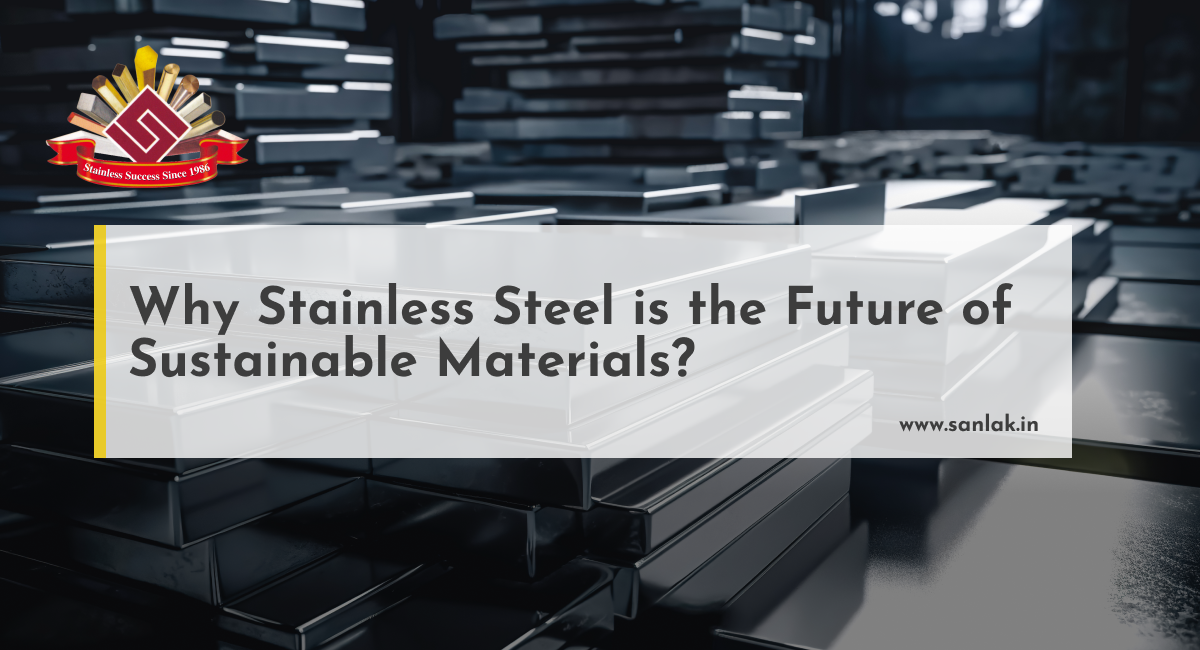
Why Stainless Steel is the Future of Sustainable Materials ?
Tired of the same old, boring materials? In today’s world, sustainability is crucial, and the materials we choose have a significant impact on our environment. Get ready to be amazed! Stainless steel is quietly stealing the spotlight as the ultimate sustainable superstar. It’s not only tough and durable but also incredibly eco-friendly. From towering skyscrapers to your kitchen sink, this versatile material is revolutionizing the industry.
Let’s dive in and discover the remarkable benefits of this article why stainless steel material is the future of sustainable living.
Key Properties
Tough and Durable:
- Strength: Stainless steel is very strong and can withstand heavy use.
- Impact Resistance: It stays tough and durable even under harsh conditions
Resists Rust and Corrosion:
- The chromium in stainless steel creates a protective layer that prevents rust and corrosion. This layer can repair itself if damaged.
- Variety of Grades: Different types of stainless steel offer varying levels of protection against different environments.
Recyclability:
- Eco-Friendly: Stainless steel can be recycled indefinitely without losing quality.
- Energy Efficient: Recycling stainless steel uses less energy compared to making new steel, making it better for the environment.
The Environmental Impact of Stainless Steel
- Production: Stainless steel manufacturing requires significant energy and can produce emissions, but advancements are improving efficiency.
- Use: Extremely durable and long-lasting, which means fewer replacements and reduced environmental impact over time.
- Disposal: Fully recyclable, with recycling using less energy than producing new steel from raw materials.
Overall, stainless steel has a lower environmental impact due to its durability and high recyclability compared to many other materials.
Applications Driving the Future of Sustainability
- Architecture and Construction: Stainless steel is a favorite for green buildings due to its durability and recyclability. It often helps structures earn green building certifications, proving its eco-friendly credentials.
- Automotive and Transportation: In vehicles, stainless steel helps cut down on weight and improve efficiency, which in turn reduces carbon emissions. It's a key player in making transportation more sustainable.
- Household Products: Stainless steel items, like appliances and cookware, last longer and are fully recyclable. This makes them a smart choice for eco-conscious consumers looking to reduce waste.
- Industrial Applications: In various industries, stainless steel’s strength and resistance to harsh conditions make it a reliable choice for equipment and machinery. Its durability leads to longer-lasting products, reducing the need for frequent replacements and contributing to overall sustainability.
Case Studies: Successful Sustainable Stainless Steel Projects
- Burj Khalifa (Dubai): Famous for being the world's tallest building, its stainless steel cladding adds to its impressive height and sleek look.
- Beijing National Stadium (China): Known as the "Bird's Nest," its stainless-steel lattice is iconic for its unique and striking design.
- The Shard (London): Renowned for its sharp, modern silhouette, stainless steel supports its glass façade and contributes to its standout appearance.
- Apple Park (Cupertino): Celebrated for its futuristic campus, stainless steel features prominently in its design for sustainability and innovation.
- Guggenheim Museum (Bilbao): Famous for its deconstructivity architecture, the stainless steel exterior enhances its avant-garde and reflective design.
- Innovative Consumer Products: From sleek kitchen appliances to durable outdoor furniture, stainless steel is featured in products designed for longevity and recyclability, highlighting its role in reducing waste and promoting sustainability.
Stainless Steel: Challenges and Future Directions
Current Limitations
- Cost: Stainless steel is often more expensive than other materials.
- Production Impact: The production process can be energy-intensive and generate emissions.
- Cost Reduction: Advances in stainless steel manufacturing could lower stainless steel prices.
- Sustainability: Improving energy efficiency and reducing emissions during production.
Future Innovations and Technological Advance
- Recycling Efficiency: Enhanced recycling methods to further reduce environmental impact.
- Advanced Alloys: Development of new stainless steel alloys with improved properties for specialized applications.
Conclusion
Choose stainless steel for your projects and products to benefit from its durability, recyclability, and low maintenance. By selecting stainless steel, you support a more sustainable future and help reduce environmental impact. By choosing stainless steel, you're not just selecting a stainless steel material; you're investing in a sustainable future.
Hope you enjoyed this article! If you found it insightful, please share it with others who might benefit from learning about the advantages of stainless steel, for high-quality stainless steel materials choose Sanlak.
